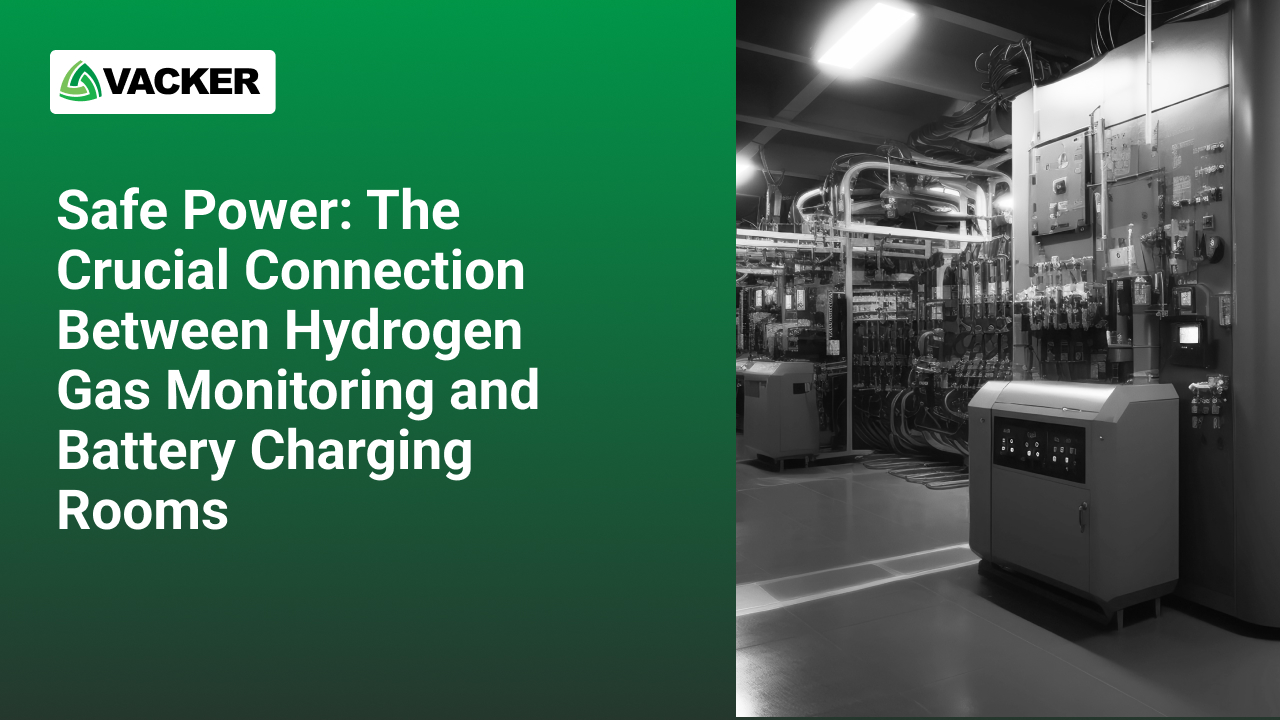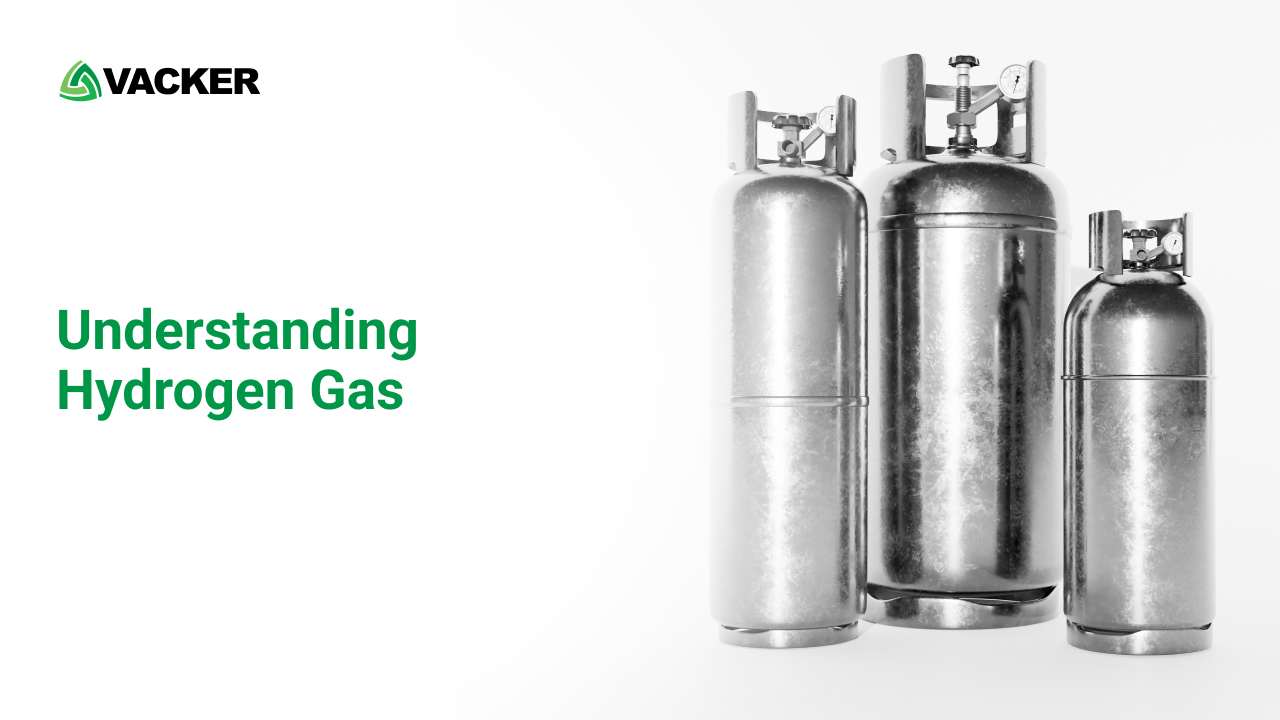
Hydrogen has shown to be a versatile and promising ally in our quest for sustainable energy solutions. Ensuring safety becomes critical as we utilize its potential for energy storage and power generating. This blog explores the crucial relationship between battery charging stations and hydrogen gas monitoring, revealing the complex dance that safeguards our move toward cleaner energy. The combination of battery technological advancement and hydrogen’s use as a clean energy source has opened up new possibilities, but it also presents issues that need our attention. This investigation aims to clarify the vital function that watchful monitoring systems play, from comprehending the special properties of hydrogen gas to exploring the core of energy storage in battery charging rooms.
Understanding Hydrogen Gas
The simplest and lightest element in the periodic table, hydrogen has special qualities that make it a promising and adaptable energy source. In its gaseous condition, it is tasteless, odorless, and colorless, making it difficult to detect without specialist equipment. Hydrogen is a desirable material for energy storage and transmission because of its notable high energy content per mass. Comprehending its chemical attributes, such as its range of flammability and features of combustion, is essential for securely utilizing its potential in a variety of applications.
Although hydrogen is a clean and eco-friendly fuel, there are some concerns to be aware of. Because hydrogen gas is so volatile, it can ignite quickly when there is an ignition source nearby. Due to its buoyancy and quick dispersion, hydrogen poses a difficulty in terms of risk mitigation. The necessity of appropriate handling and containment procedures is highlighted by the possibility of explosion in small spaces or places with poor ventilation. Identifying these hazards is the first step in creating strong safety procedures.
In order to ensure safety, proactive monitoring and detection systems are essential, especially considering the inherent dangers linked with hydrogen. Preventing possible risks requires early detection of leaks or abnormal concentrations. Modern gas detection technologies, such as sensors tailored to hydrogen, allow for real-time monitoring and prompt reaction to variations from standard values. In order to effectively create a secure environment and mitigate hazards, it is imperative that facilities housing hydrogen processes emphasize the necessity of continuous surveillance and the integration of these systems.
Battery Charging Rooms
The vital center of energy storage facilities, battery charging rooms are where renewable energy potential is captured and stored for later use. The complex mechanisms that keep batteries charged and in good condition are housed in these rooms. Batteries are essential to our search for effective energy storage. Their importance stems from their capacity to store surplus energy produced during peak times, guaranteeing a steady and dependable power supply even in the absence of active electricity generation from renewable sources. Beyond simple storage, battery charging rooms play a crucial role in energy grid balancing, backup power during blackouts, and the integration of renewable energy sources into the larger power infrastructure. 
The vital center of energy storage facilities, battery charging rooms are where renewable energy potential is captured and stored for later use. The complex mechanisms that keep batteries charged and in good condition are housed in these rooms. Batteries are essential to our search for effective energy storage. Their importance stems from their capacity to store surplus energy produced during peak times, guaranteeing a steady and dependable power supply even in the absence of active electricity generation from renewable sources. Beyond simple storage, battery charging rooms play a crucial role in energy grid balancing, backup power during blackouts, and the integration of renewable energy sources into the larger power infrastructure.
To lessen the risks associated with hydrogen exposure in battery charging rooms, a comprehensive set of safety regulations and guidelines is required. These regulations aim to ensure the safe operation of these facilities, protecting the personnel and the infrastructure. Flame arrestors, which keep external ignition sources out of the room, fire suppression systems, and ventilation systems, which disperse hydrogen, are examples of safety precautions. It is imperative to comply with regulatory standards, which often involve strict guidelines for construction, equipment installation, and ongoing maintenance. A synopsis of safety policies and processes offers the foundation for creating a secure atmosphere in battery charging rooms in addition to demonstrating the commitment to safety.
Introduction to Hydrogen Gas Monitoring Systems
Hydrogen gas monitoring systems are the front-runners in energy storage facility safety when it comes to potential threats. These devices are made to monitor the surroundings constantly and provide data on hydrogen concentrations in real time. The main goal is to quickly identify any deviations from the norm so that mitigation and intervention can begin right away. Since hydrogen is a colorless and odorless gas, monitoring systems play a critical role in providing an unseen barrier that protects the integrity and safety of operations in battery charging rooms.
Types of Gas Sensors Used for Hydrogen Detection
The precision and dependability of the sensors used determine how well hydrogen gas monitoring works. Hydrogen detection is the focus of several kinds of gas sensors, each with special benefits of its own. Among the often employed technologies are solid-state sensors, metal oxide sensors, and catalytic bead sensors. For example, hydrogen is detected by catalyzing its combustion in catalytic bead sensors, which generate a signal proportional to the gas concentration.

It is crucial to comprehend the subtleties of these sensors in order to choose the best technology for the job while maintaining accurate and trustworthy monitoring.
Integration of Gas Monitoring Systems With Battery Charging Infrastructure
A vital synergy that strengthens overall safety is formed by the smooth integration of battery charging infrastructure with gas monitoring systems. These systems are placed in such a way as to cover potential hydrogen-containing areas, such as neighboring spaces and battery charging rooms. Sensor placement is just one aspect of integration; another is developing communication protocols to send data in real time to central control systems. Because of this interconnectedness, any anomalies found will prompt actions, like turning on ventilation systems or warning staff, preventing potential risks and upholding a safe environment for energy storage operations. The incorporation of gas monitoring systems serves as the cornerstone of a strong safety plan, highlighting the significance of a comprehensive approach to facility security.
Importance of Real-time Monitoring
In battery charging rooms, constant observation is a proactive approach to mitigate potential risks rather than merely a preventive one. The dynamic nature of energy storage operations necessitates ongoing attention to detail because of the multitude of potential contributing factors to hydrogen gas generation. Constant observation makes sure that any anomaly or departure from the norm is quickly detected, enabling prompt action and the deployment of safety precautions. By giving a real-time picture of the conditions inside battery charging rooms, this ongoing awareness serves as the foundation of a secure environment.
Having a finger on the safety pulse in battery charging rooms is possible thanks to real-time data from monitoring systems. The ability to respond quickly and take preventative action is made possible by the immediate availability of information. Facility operators can act quickly in the event of hydrogen detection, whether from unplanned leaks or off-gassing during charging. This is made possible by real-time data. This can entail turning on ventilation systems, starting emergency procedures, or quickly isolating impacted areas. Beyond just being able to respond reactively, the advantages also allow for a proactive approach by seeing possible problems before they become serious, which promotes a culture of preventive safety measures.
Case studies that describe actual events are probably the best way to show the impact of efficient real-time monitoring. Analyzing cases in which monitoring systems were crucial in preventing possible catastrophes offers concrete proof of their importance. These case studies attest to the real-world benefits of investing in strong monitoring infrastructure, whether it be in halting the rise in hydrogen concentration, avoiding equipment malfunctions, or guaranteeing worker safety. Industries can gain important insights into improving their own monitoring strategies and reaffirming the crucial role that real-time data plays in maintaining operational integrity and safety by taking lessons from these experiences.
Safety Standards and Compliance
Hydrogen gas monitoring industry safety standards are the cornerstone of a safe energy infrastructure. These guidelines, which are frequently created in concert by organizations, industry professionals, and regulatory bodies, lay out the foundation for guaranteeing the secure handling and observation of hydrogen. Thorough guidelines cover topics like sensor technology, calibration protocols, and system performance specifications. A summary of these standards establishes a foundational comprehension, promoting a shared dedication to establishing and preserving a secure working environment in energy storage facilities.
In order to ensure safety, battery charging rooms must adhere to strict compliance requirements set forth by regulatory frameworks. These rooms are subject to a set of regulations that are intended to reduce the risks that may arise from the use of hydrogen and other hazardous materials. Standards for ventilation, requirements for structural integrity, and emergency response procedures are a few examples of compliance. It is imperative to comprehend and adhere to these regulations in order to cultivate a safety-conscious culture and guarantee the battery charging rooms’ ability to withstand unforeseen obstacles.
Energy storage facilities rely heavily on monitoring systems to meet and even surpass safety regulations. By constantly monitoring the surroundings for concentrations of hydrogen gas, these systems serve as the first line of defense. Monitoring systems actively support adherence to safety regulations by giving real-time data and prompting responses to deviations from normal levels. They play a more significant role than just following the rules; they are essential parts of the overall safety plan, providing a proactive approach that keeps up with the constantly changing safety standards. Monitoring systems develop further as technology does, guaranteeing that facilities not only meet but also exceed industry safety standards.
Advanced Technologies in Gas Monitoring
As new technologies advance and new limits are reached, the field of hydrogen gas monitoring is always changing. The capabilities of hydrogen gas monitoring systems have been redefined by these innovations, which range from improvements in sensor sensitivity to the incorporation of artificial intelligence. Innovative detection techniques, like sensors based on spectroscopy and applications of nanotechnology, demonstrate the industry’s dedication to improving the accuracy and dependability of monitoring. In addition to improving our capacity to identify hydrogen gas, these cutting-edge technologies open the door to more complex and nuanced assessments of the environmental factors in battery charging rooms.
Gas monitoring has undergone a revolutionary change with the integration of wireless and Internet of Things (IoT) technologies, which provide unmatched connectivity and data accessibility. Since wireless sensors don’t require a lot of cabling, they can be deployed in a flexible way inside complex infrastructures like battery charging rooms. This connectivity is improved by IoT-based monitoring solutions, which allow real-time data transmission to centralized control systems. In addition to streamlining data management, this interconnection enables remote monitoring and control, giving facility operators immediate access to information about hydrogen gas levels and guaranteeing a prompt and coordinated reaction to any hazards.
Energy storage facilities are entering a new era of increased safety with the adoption of cutting edge technologies in gas monitoring. The benefits are numerous and include increased detection sensitivity and accuracy as well as the capacity to keep an eye on a wider variety of environmental factors. Because of their quicker reaction times, these technologies make it possible to take preventative action before possible risks worsen. Furthermore, the incorporation of cutting-edge technologies frequently leads to more intuitive user interfaces and extensive data analytics capabilities, which enable a more thorough comprehension of operational conditions. In the end, these innovations’ benefits go beyond merely meeting safety regulations; they signify a dedication to ongoing development, guaranteeing the highest standards of safety in the ever-changing field of energy storage.
Best Practices for Implementation
The careful installation and calibration of gas monitoring systems is the first step in ensuring their effectiveness. A smart installation places sensors strategically, taking into account things like possible hydrogen sources and battery charging rooms’ ventilation patterns. In order to ensure that readings of gas concentration are accurate, calibration is equally important. Important actions include routine calibration checks, alignment with manufacturer specifications, and following installation instructions. This careful approach strengthens the overall safety infrastructure by reducing the possibility of false alarms or leaks that go unnoticed, as well as providing a strong basis for dependable monitoring.
Regular maintenance and testing are essential to the longevity and efficacy of gas monitoring systems. The system is kept in optimal operating condition through planned inspections, sensor checks, and functional testing. Cleaning sensors, checking the integrity of connections, and making sure alarms and communication systems are operating properly are all examples of routine maintenance. The responsiveness of the system is further validated by regular testing, which includes simulated leak scenarios. This proactive approach not only improves the system’s dependability but also finds and fixes possible problems before they endanger battery charging rooms’ safety.
Without a trained human component, no monitoring system can function at its best. A comprehensive safety strategy’s cornerstone is equipping staff with the necessary training for efficient emergency response. Teaching the interpretation of monitoring data, initiating emergency protocols, and using safety equipment are all part of this. Response skills are honed through frequent drills and simulations that include a variety of emergency scenarios. Employee education goes beyond responding to events; it also entails developing a culture of safety awareness, enabling people to recognize possible hazards, and encouraging an efficient and well-coordinated response to guarantee the security of staff members and the facility as a whole.
Conclusion
The symbiotic relationship between hydrogen gas monitoring and battery charging rooms emerges as a key component in safeguarding our energy future as we pursue safe and sustainable power. As we traverse the ever-changing terrain of energy storage, it becomes increasingly important to comprehend the properties and possible hazards of hydrogen gas. Combining these insights with the vital function that battery charging rooms perform in energy storage facilities emphasizes the necessity of taking a proactive and watchful approach to safety. With their cutting-edge technologies and instantaneous capabilities, gas monitoring systems provide a vital link that creates an imperceptible barrier against potential dangers.
It is impossible to overestimate the significance of abiding by industry safety standards and compliance requirements. We create an environment where cutting-edge monitoring technologies seamlessly integrate with battery charging infrastructure by establishing a strong foundation rooted in regulations and protocols. This sets the stage for enhanced safety. Adopting cutting-edge technologies allows for previously unheard-of levels of precision, connectivity, and response times while also ensuring compliance.
As we come to the end of our investigation into safe power, it is evident that the process continues even after monitoring systems are put in place. The essential components that strengthen this vital link are best practices for personnel training, installation, calibration, and routine maintenance. Vacker reaffirm our dedication to a culture of safety—one in which every effort is made to prevent, identify, and address potential risks—through these practices.
As energy storage technology advances, safe power is becoming a practical reality rather than just a pipe dream. We are laying the groundwork for a safe and sustainable energy future by acknowledging the interdependence of battery charging stations and hydrogen gas monitoring. By being diligent, creative, and unified in our dedication to safety, we make sure that the power we use today continues to be a source of advancement rather than danger. The vital link we create today serves as the cornerstone upon which we erect a safe, secure, and efficient energy environment for future generations.
For more information, please feel free to reach out to us.



Leave a Reply